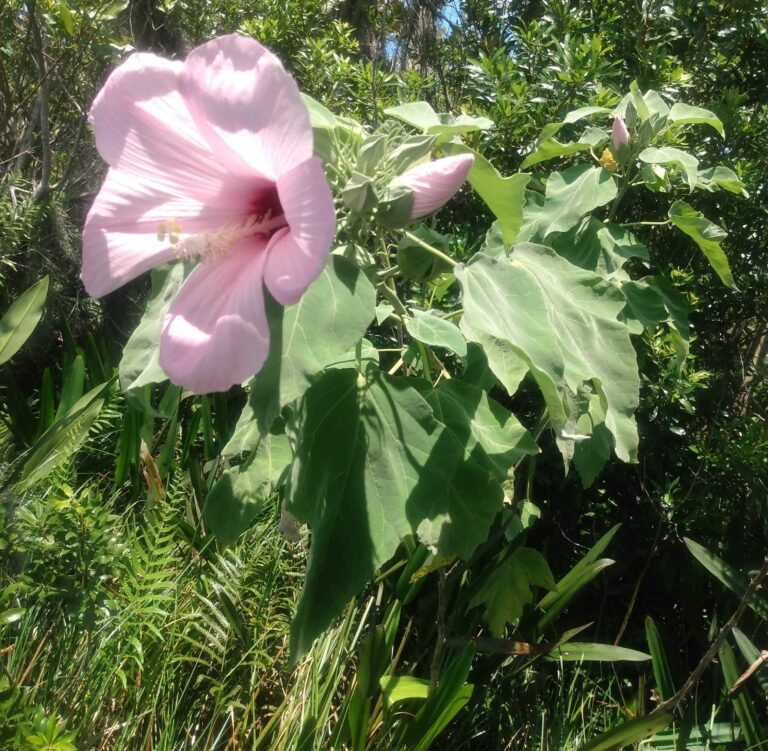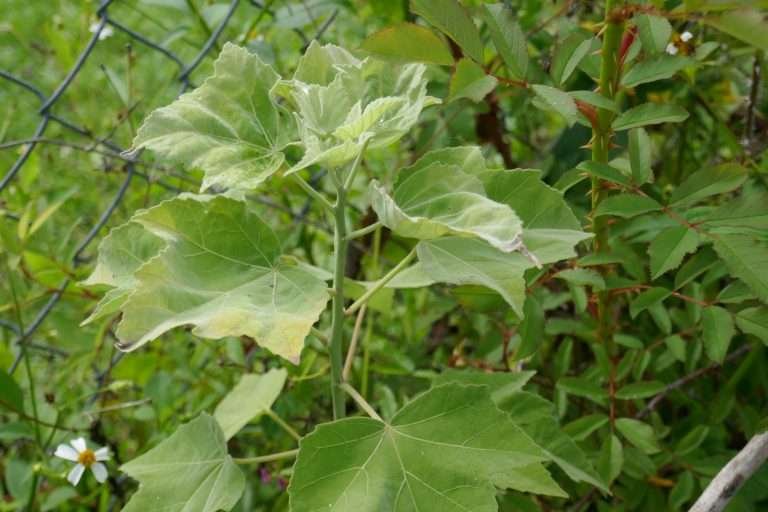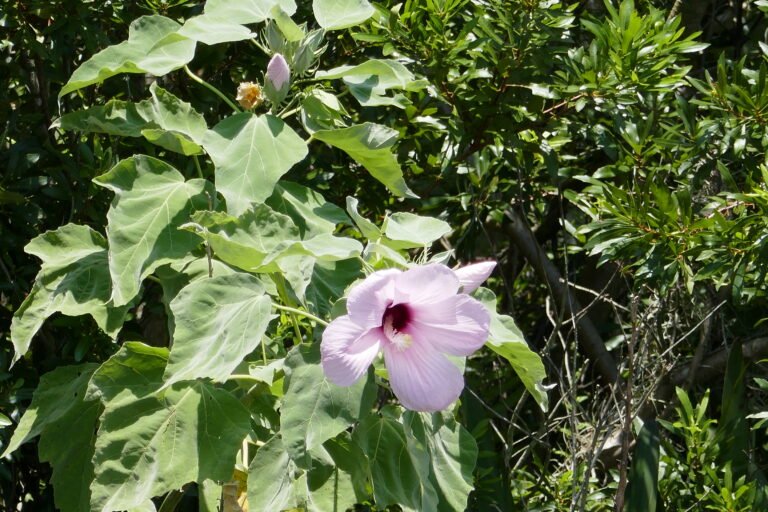
Hibiscus grandiflorus
(Swamp Rosemallow)

Common Names, Latin Name, and Family
Common names include large-flowered hibiscus, pink swamp hibiscus, swamp rosemallow, swamp rose-mallow and velvet hardy mallow.
The Latin name is Hibiscus grandiflorus.
Swamp rosemallow is in the Malvaceae, or mallow, family.
Form
This is a shrub-like wildflower that gets large woody stems. It is deciduous and grows to a height of about 6 feet and about 4 feet wide.
Leaves
The leaves are alternate, stalked and grayish green in color. Their shape is ovate to deltoid and sometimes heart shaped. The surface is velvety. Some leaves may have three lobes while others will not. The margins are serrate.

Flowers
Swamp rosemallow flowers are huge pink beauties and appear in the spring, summer and early fall.

Habitat
It is found naturally occurring in lake sides, marshes, wetlands, swamps and wet areas.
Native Range
It is native to Alabama, Florida, Georgia, Louisiana, Mississippi, and Texas. It grows in zones 8a to 11.
Landscape Use
In the home landscape it will need constant water so a site that has poor drainage is a good location, or container grown.
It needs a lot of room to grow because of its large size.

Wildlife Use
The flower nectar attracts butterflies, bees, and beetles.
It is a larval host plant for several species of butterflies and moths including the Gray Hairstreak, Painted Lady, Common Checkered Skipper, Tropical Checkered Skipper, Pearly Wood Nymph, Yellow Scallop Moth, Io Moth, and Delightful Bird-Dropping Moth.
Propagation
It can be grown from seed and transplanted. When transplanting be sure to remove any flowers and most of the upper foliage so it can focus on recovering and repairing its roots.